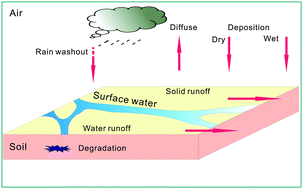Fate estimation of polycyclic aromatic hydrocarbons in soils in a rapid urbanization region, Shenzhen of China†
Abstract
Our previous study indicated that the current level of polycyclic aromatic

* Corresponding authors
a
Shenzhen Key Laboratory of Circular Economy, Shenzhen Graduate School, Peking University, Shenzhen, China
E-mail:
huizeng0608@gmail.com
Tel: +86-755-26035585
b Department of Ecology, College of Urban and Environmental Sciences, Peking University, Beijing, China
Our previous study indicated that the current level of polycyclic aromatic

 Please wait while we load your content...
Something went wrong. Try again?
Please wait while we load your content...
Something went wrong. Try again?
H. Ni, P. Qin, S. Cao and H. Zeng, J. Environ. Monit., 2011, 13, 313 DOI: 10.1039/C0EM00470G
To request permission to reproduce material from this article, please go to the Copyright Clearance Center request page.
If you are an author contributing to an RSC publication, you do not need to request permission provided correct acknowledgement is given.
If you are the author of this article, you do not need to request permission to reproduce figures and diagrams provided correct acknowledgement is given. If you want to reproduce the whole article in a third-party publication (excluding your thesis/dissertation for which permission is not required) please go to the Copyright Clearance Center request page.
Read more about how to correctly acknowledge RSC content.
 Fetching data from CrossRef.
Fetching data from CrossRef.
This may take some time to load.
Loading related content
